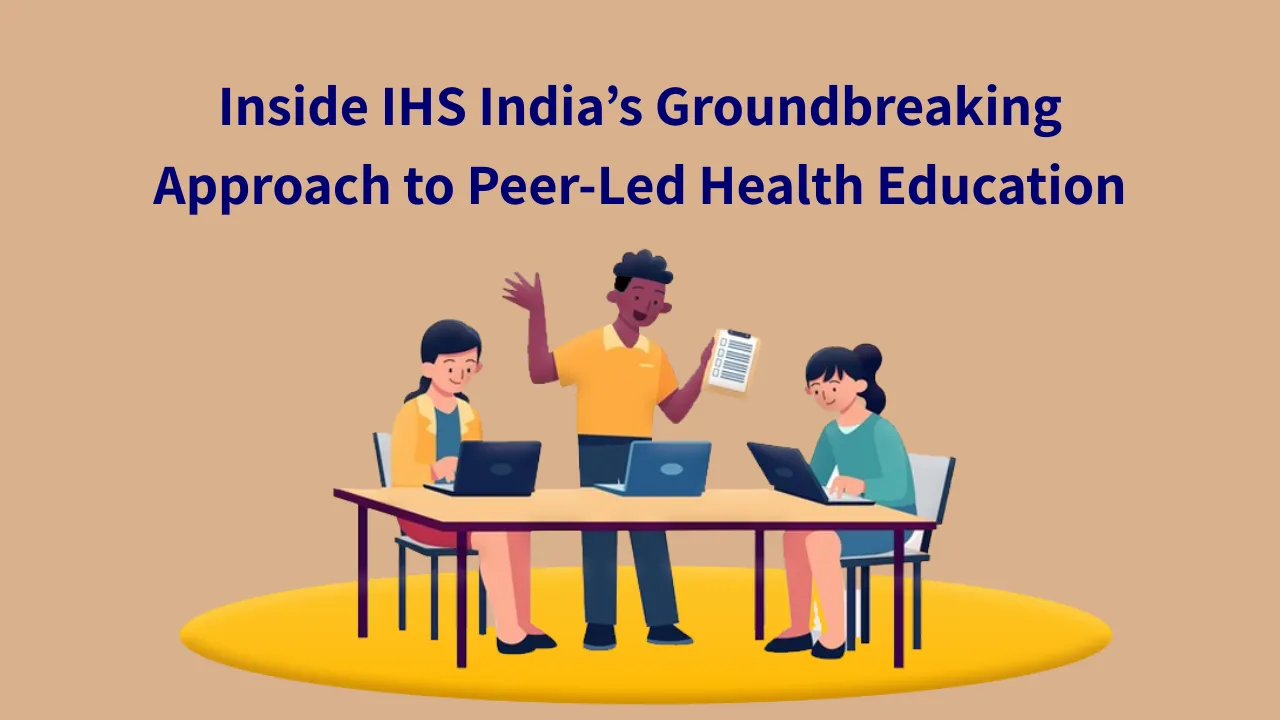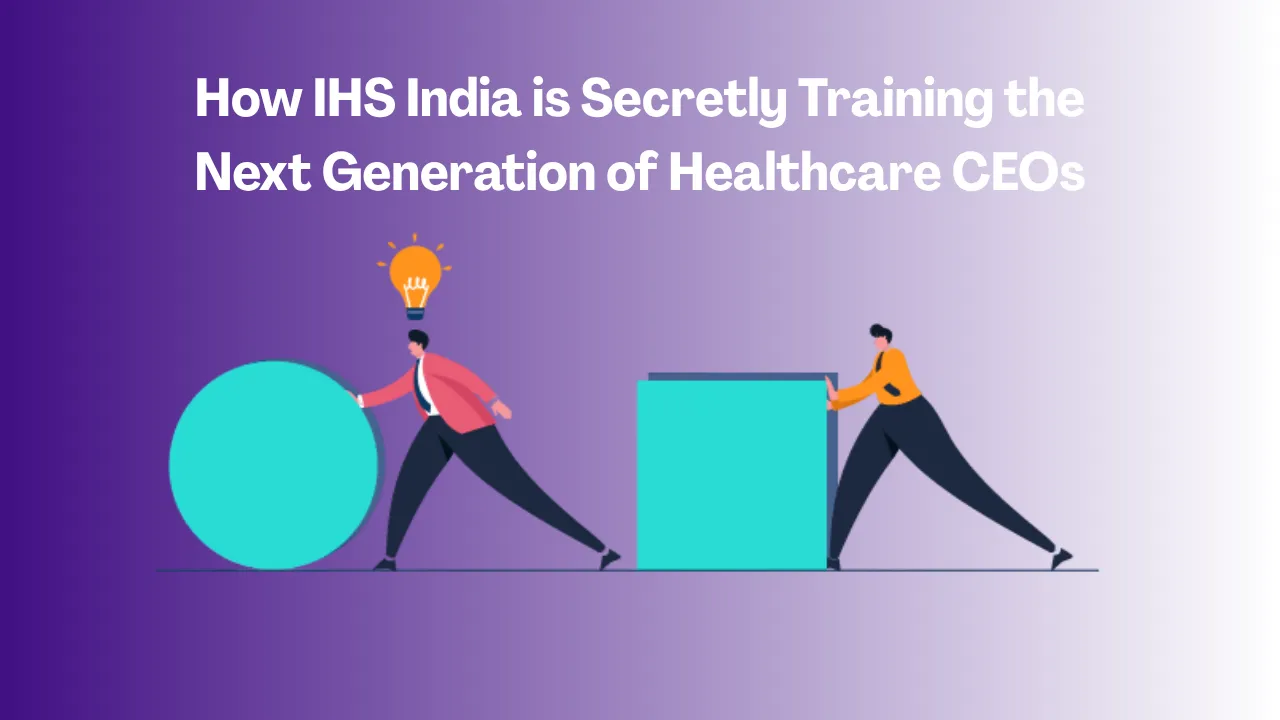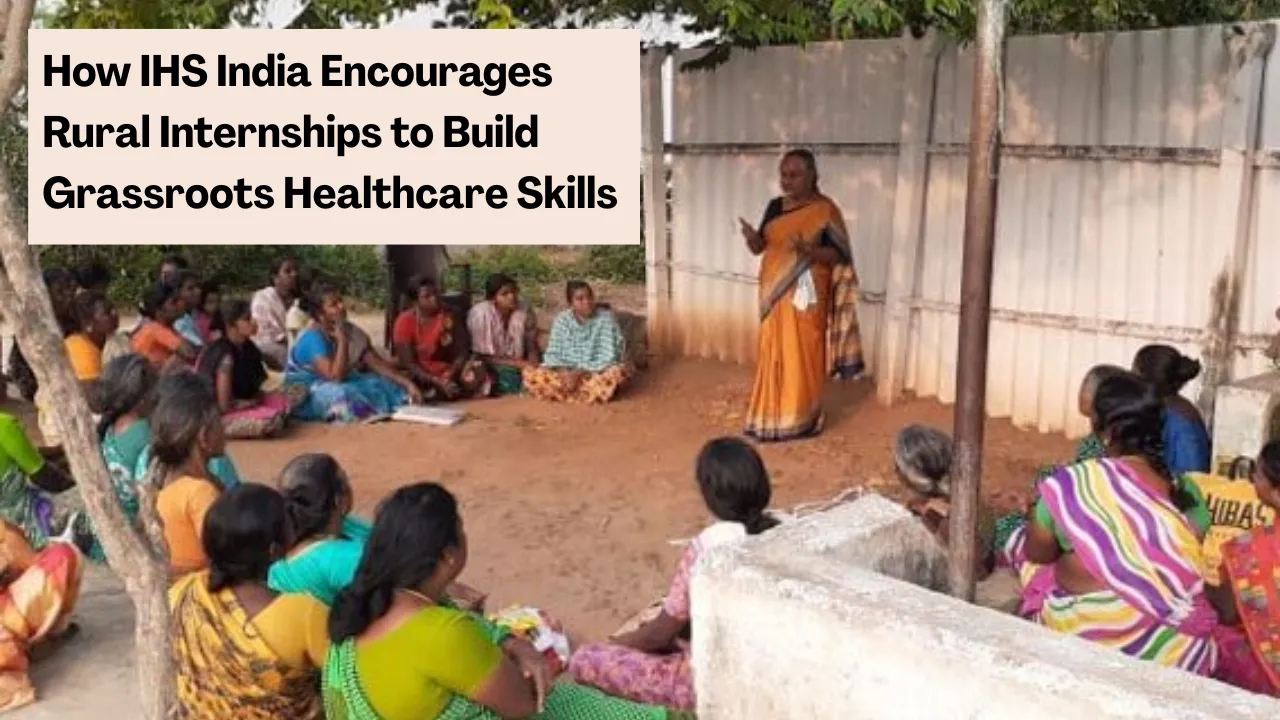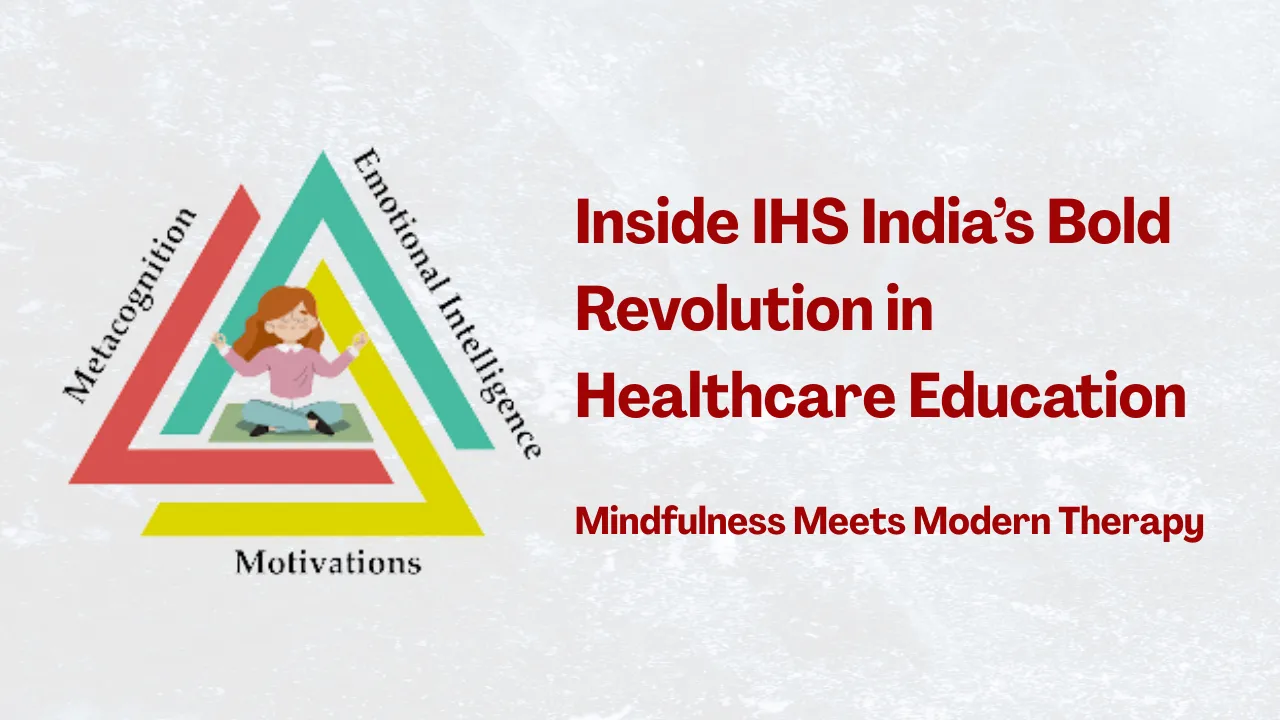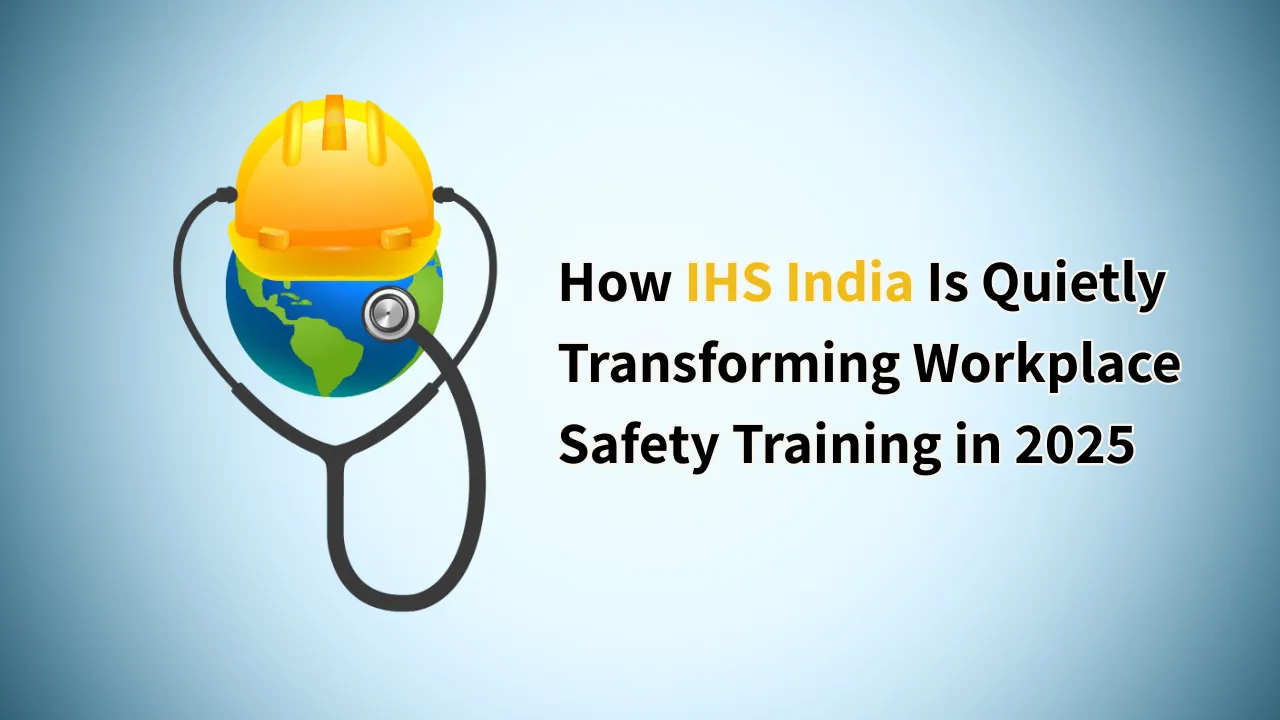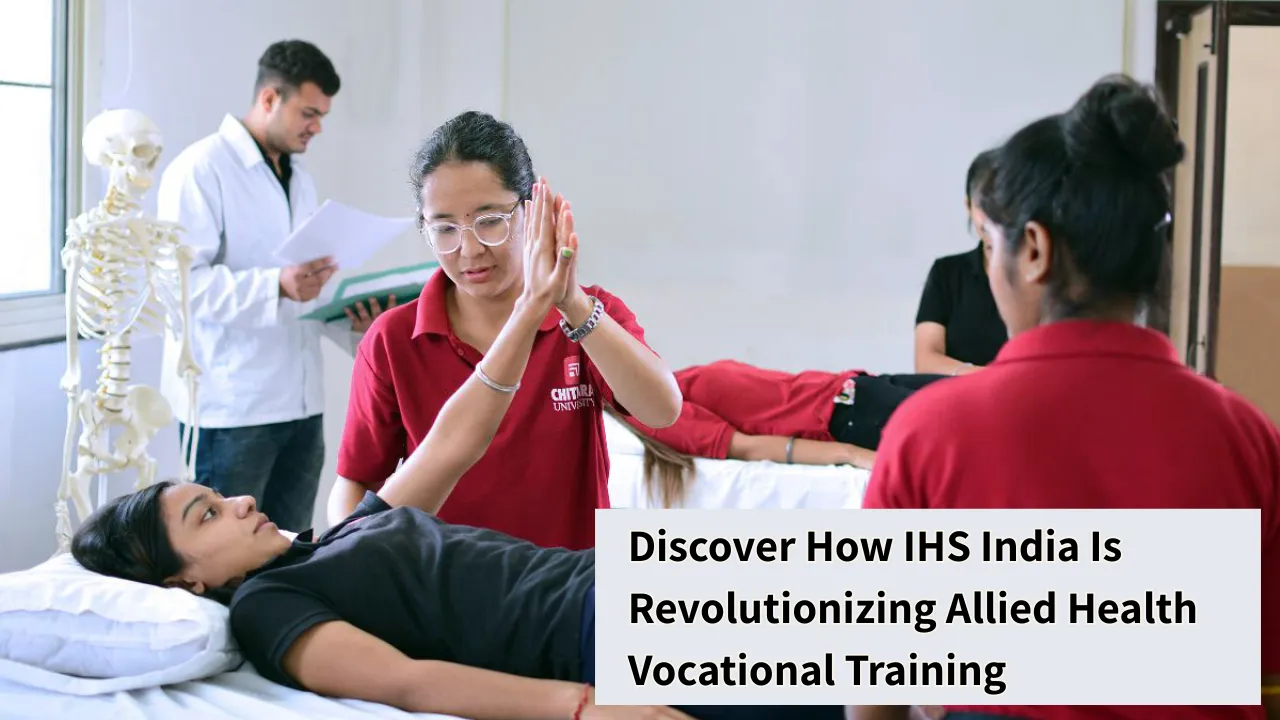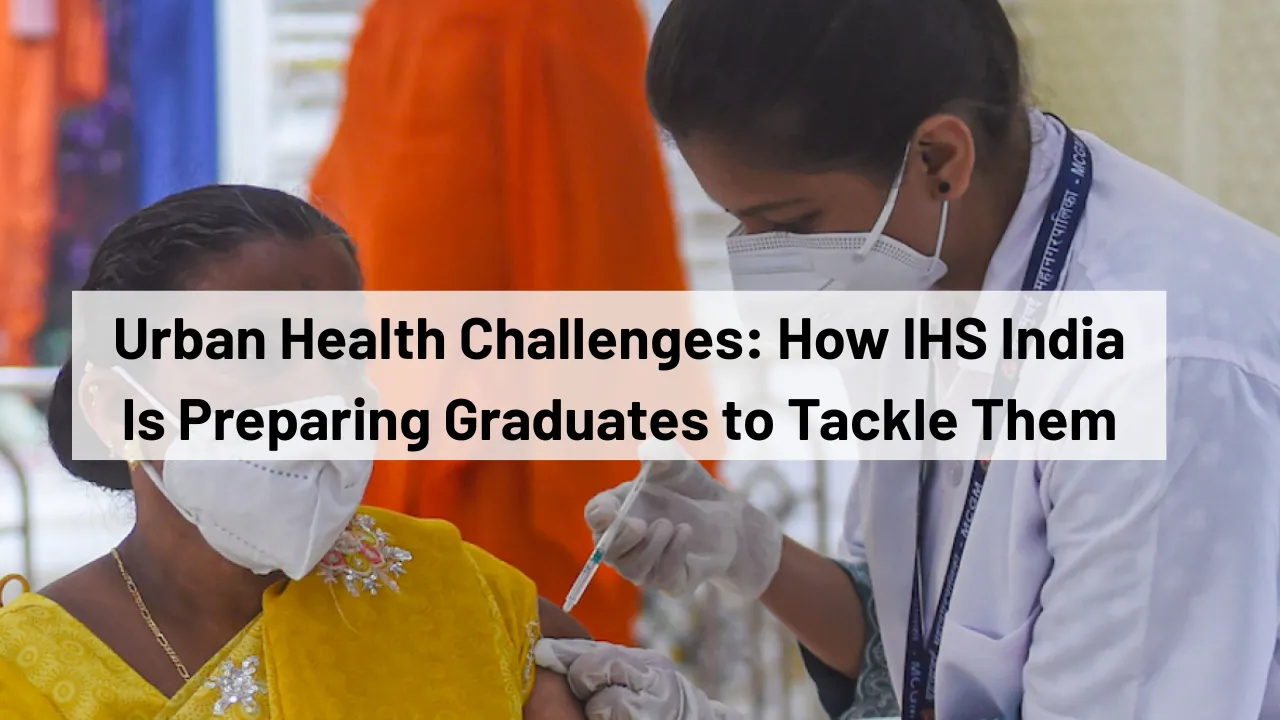Peer-to-Peer Learning in Health Sciences: Peer-to-peer learning in health sciences is revolutionizing medical education by creating dynamic, student-centered environments where collaboration takes priority over competition. In contrast to traditional top-down teaching, this model taps into the shared experience of students, allowing them to grow together both academically and professionally. IHS India stands at the forefront of this movement, pioneering a fresh take on health sciences education that is as effective as it is inclusive.
This article explores how IHS India is encouraging peer-to-peer learning in health sciences through structured mentorship, hands-on student involvement, and innovative support systems. From mentorship circles to student-led workshops, this institution is redefining how future healthcare workers prepare for the real-world challenges of the medical field.
Peer-to-Peer Learning in Health Sciences
Peer-to-peer learning in health sciences empowers students by positioning them not just as learners, but also as educators. At IHS India, this approach is central to the learning experience. Students actively engage in teaching, mentoring, and collaborating with their peers in real-time, mirroring the collaborative environments found in hospitals and clinical teams. This method enhances comprehension, builds empathy, and sharpens practical communication skills. By fostering both academic and emotional intelligence, IHS India’s peer learning programs cultivate healthcare professionals who are confident, compassionate, and ready for teamwork-driven practice.
Overview of Initiatives at IHS India
| Initiative | Description |
| Mentorship Circles | Small groups led by senior students to guide juniors in academic and career matters. |
| Student-Led Teaching Sessions | Peer-led tutorials or presentations that reinforce course content. |
| Case Study Collaborations | Team-based analysis of real-world medical cases. |
| Skill-Building Workshops | Hands-on, peer-coordinated sessions for clinical and soft skills. |
| Feedback and Reflection Routines | Structured peer review and self-assessment to encourage growth. |
| Digital Peer Learning Platforms | Online tools that connect students for sharing resources and discussions. |
Mentorship Circles at IHS India
Mentorship circles at IHS India are far more than informal support groups. These structured learning pods connect experienced students with those just beginning their academic journeys. They meet regularly to discuss coursework, share clinical experiences, and prepare for exams. Unlike traditional tutor systems, mentorship circles are horizontal in nature—more relatable, more conversational, and far more impactful.
This model builds camaraderie while deepening understanding. Senior students gain leadership experience and reinforce their own learning, while junior students benefit from personalized support. In a field as demanding as healthcare, this kind of human connection is invaluable. It reflects the very essence of peer-driven growth—mutual learning, shared accountability, and holistic development.
Student-Led Teaching Programs
At IHS India, student-led teaching programs are a standout feature. These sessions aren’t simply review classes—they are carefully prepared lessons delivered by students who have recently mastered the same material. Whether it’s explaining clinical procedures or dissecting complex theories, peer teachers bring authenticity and relatability to the table.
Students are encouraged to use various formats: group discussions, visual presentations, even practical demonstrations. The idea is not only to learn, but to teach—and in doing so, to deepen one’s own understanding. These peer sessions also sharpen communication and instructional skills, key competencies for any healthcare provider.
This approach doesn’t just build knowledge—it builds teachers, leaders, and collaborators. It encourages critical thinking and positions students as active contributors rather than passive recipients.
Benefits of Peer-to-Peer Learning
The benefits of peer-to-peer learning in health sciences are extensive and multi-dimensional. Not only does it boost academic performance, but it also promotes essential interpersonal and clinical skills. Here are some key advantages:
- Enhanced Retention: Teaching others reinforces knowledge better than passive study.
- Confidence Building: Students feel more secure in their understanding when they successfully explain topics.
- Real-World Preparedness: Collaborative environments mimic real clinical settings.
- Emotional Support: A strong peer network reduces stress and burnout.
- Cost-Effective Learning: Peer sessions are accessible and can supplement costly coaching.
Perhaps most importantly, this model fosters empathy and emotional intelligence—traits vital in healthcare professions. Students learn to listen, guide, support, and care for each other, mirroring the collaborative nature of patient care teams.
List of Key Initiatives by IHS India
- Mentorship Circles: Senior students guide juniors, promoting leadership and offering academic and emotional support.
- Student-Led Teaching Programs: Learners take turns explaining key concepts, boosting understanding and peer interaction.
Practical Exposure Through Collaboration
IHS India recognizes that healthcare education isn’t just about theory—it’s about action. By integrating peer-led learning into practical modules like labs, simulations, and case discussions, students learn to work as a team under pressure. These experiences replicate real-life hospital settings where doctors, nurses, and technicians must coordinate seamlessly.
Peer collaboration in simulated scenarios helps students develop rapid decision-making, adaptability, and shared responsibility. It makes them better clinicians and more compassionate human beings. When students learn together, they also learn to succeed together—and that’s the mindset modern medicine demands.
Continuous Feedback and Improvement
One of the strongest features of IHS India’s approach is its commitment to feedback. After each student-led session or mentorship meet-up, participants engage in reflection activities. Constructive peer feedback—offered with honesty and kindness—helps learners grow in both technical skill and emotional awareness.
This model promotes continuous self-assessment and community development. Students are taught to accept criticism not as judgment, but as an opportunity for betterment. In an era where adaptability and growth mindset are vital, these soft skills are as critical as the technical curriculum.
Role of Technology in Peer Learning
IHS India utilizes modern educational technology to make peer-to-peer learning in health sciences scalable and effective. With tools like student forums, mobile learning apps, and video-sharing platforms, collaboration continues well beyond classroom walls.
Students can share resources, conduct Q&A sessions, and engage in topic-specific discussions at their convenience. These tech-enabled platforms also foster inclusivity, giving every student—regardless of schedule or location—a chance to contribute.
Moreover, digital archives of peer-led tutorials allow future students to benefit from the work of their predecessors, creating a sustainable cycle of learning and improvement.
FAQs
1. What makes peer-to-peer learning different from traditional education?
It relies on students teaching and learning from each other, making education more collaborative and practical.
2. How do mentorship circles help at IHS India?
They provide personalized support from seniors who understand academic and clinical challenges firsthand.
3. Are student-led sessions effective for difficult subjects?
Yes, because peer explanations are often more relatable and easier to understand than formal lectures.
4. Can peer learning replace traditional teaching?
It’s not a replacement but a powerful supplement that enhances overall understanding and application.
5. Is technology essential for peer learning at IHS?
Yes, digital tools expand access, flexibility, and communication, making peer learning more efficient.
Final Thought
IHS India’s forward-thinking embrace of peer-to-peer learning in health sciences is not just about academic achievement—it’s about building a new generation of professionals who understand collaboration, empathy, and accountability. This approach bridges the gap between theory and practice, between isolation and inclusion, and between learning and leading.
If you’re a student, educator, or healthcare enthusiast, consider how peer-driven education could transform your journey. Got thoughts or experiences with peer learning? Drop them in the comments. And don’t forget to explore more insightful content and discover how your academic path aligns with the future of healthcare.
